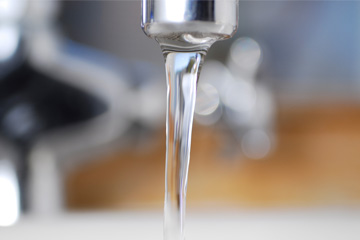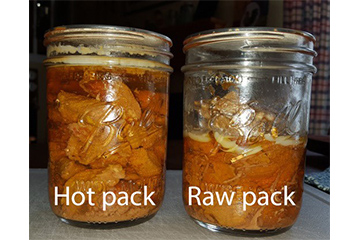
Preparing for the Unexpected — Home Canning Water

Severe weather, snowstorms, unexpected power outages — all of these and more may lead to a compromised water supply in your community or home. While commercially bottled water is readily available in many areas, you can prepare an inexpensive emergency supply by canning water at home. The Federal Emergency Management Agency recommends having a two-week supply of water on hand that would provide one gallon per day for each family member. You and your family need safe water for such home activities as drinking, cooking, making any prepared beverage, washing dishes and tooth brushing. Canning water is a simple process for preparing an emergency stockpile.
Start by taking some precautions. While home canning water will kill vegetative bacterial cells, viruses and parasites, it will not destroy other contaminants such as heavy metals, salts or other chemicals.
So first and foremost, use only drinking (potable) water that is free of filth and debris.
Second, ensure the water is free of nutrients that can cause the growth of Clostridium botulinum. This means the water cannot be contaminated with food, soil or other sources. The water must be pure water. Do not add anything, such as flavorings. The boiling water canning process will not kill C. botulinum spores.
Third, follow standard boiling-water canning procedures. Pre-boil the water for five minutes before filling your jars to help ensure purity. No recommendations exist for processing home canned water in a pressure canner.
Please note these recommendations are for pints or quarts only. As with all foods that are canned at home, remember to adjust your processing time for the altitude at which you live. Process for 10 minutes at 0–1,000 feet; for 15 minutes at 1,001–6,000 feet; and for 20 minutes at 6,001 feet or above.
Store canned water in a cool, dry, dark location, and use within one year for best quality and safety.
For step-by-step processing instructions, see the Home Canning Water guidelines prepared by the University of Georgia.
Sources: Schaffner, Donald W., Matt Cheever, Brian A. Nummer, Barbara H. Ingham, Teagan Williams, and Elizabeth L. Andress. 2020. “Home Canning Water.” National Center for Home Food Preservation.
Raw Pack Versus Hot Pack

Many food preservers want to know if there really is any difference in the quality of canned food based on whether it has been raw packed or hot packed. Obviously, the main difference is that one method involves raw food while the other uses partially cooked food. Both methods have benefits and drawbacks.
Raw packing is the practice of filling jars tightly with freshly prepared but unheated food. Many fresh foods contain between 10% and more than 30% air. How long canned food retains its high quality depends on how much air is removed from food before the canning jars are sealed. Air is often trapped between pieces of raw food as well as within the flesh of produce and can be difficult to eliminate. Trapped air can cause a loss of liquid during the canning process because the produce absorbs liquid as it shrinks; floating fruit (air trapped in produce); or discoloration of the food after a few months of storage. Not all home canned foods can be prepared using the raw pack method.
Hot packed foods are heated to a boil and subsequently simmered for two to five minutes. Canning jars are then promptly filled with the boiled food. That precooking shrinks the foods, allowing you to fit more food inside the jar and preventing trapped air from causing floating fruit or a loss of liquid in the jars. In addition, some foods — like pears — retain their shape and quality best if you use the hot pack method to can them.
All home canned foods may be hot packed, but only some products are also safe to raw pack.
Whether food has been hot packed or raw packed, you should also heat to boiling the juice, syrup or water you include with the foods before you add it to the jars. It is crucial to use the recommended method of pack for the highest-quality product.
Sources: National Center for Home Food Preservation. 2015. “General Canning Information: Ensuring High-Quality Canned Foods.” Last reviewed February 2, 2017.